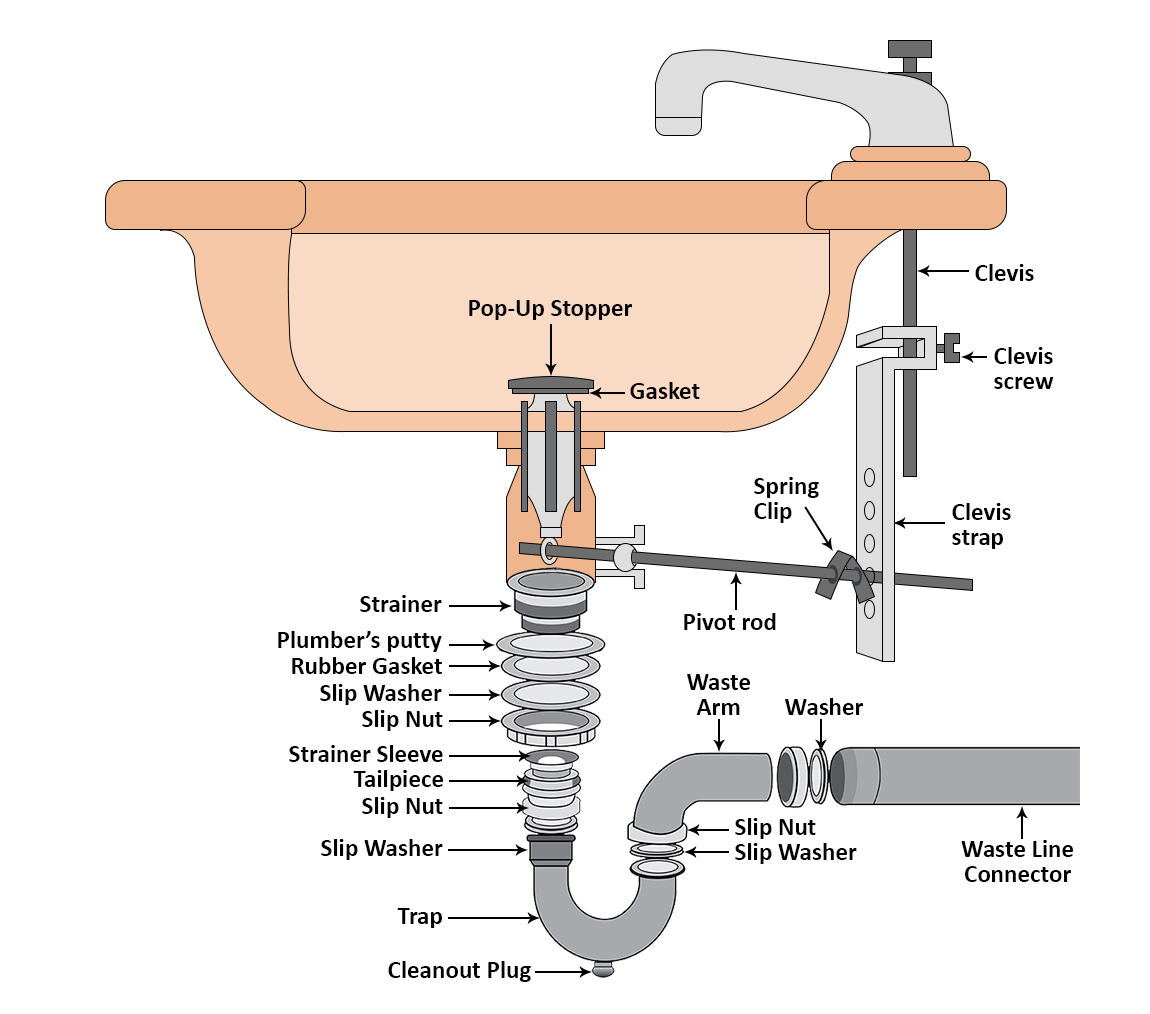A sink that drains water quickly without leaking is something that many can take for granted, which is why it’s crucial to have a sink drain pipe correctly installed.
While it’s best to have a professional do the job, knowing how to install a sink drain pipe keeps you informed and could save you a fair amount of stress.
Here’s what you need to know about how to install one.
Tools and materials required
Here are the tools and materials you’ll need.
- A PVC pipe
- Marvel connectors
- A tailpiece extension
- Channel-lock pliers
- White Teflon tape
- PVC cement
- A pail or large container
- A P-trap kit
- Measuring tape
- Personal protective equipment
Disassembling your sink drain pipe
When it comes to how to install a kitchen sink drain pipe, unless you’re installing a brand-new sink, you’re going to need to disassemble the old drain pipe first.
Ensure you have a pail or large container tucked under the plumbing as you disassemble it to catch any water that may spill out while you work. Also, make sure to always shut off the water before doing any plumbing work.
Here’s how to start disassembling your sink drain pipe.
Step 1: Unscrew the tailpiece unions
Using a pair of channel lock pliers, unscrew the unions connecting the tailpiece extension to the actual tailpiece. Depending on the style of the sink, there may be one or two tailpieces.
Step 2: Unscrew the P-trap
The next step in how to install kitchen sink drain pipes by disassembling the previous one is using your channel lock pliers again to unscrew the P-trap and drain the water into your bucket or large container.
The P-trap will likely be right-hand threaded—however, as it’s positioned upside down, you’ll need to loosen it in a clockwise direction.
Step 3: Disconnect the dishwasher drain hose
If a dishwasher is connected, use a screwdriver to loosen the drain hose clamp connecting your dishwasher to your sink drain pipe and simply pull the hose out.
How to install a sink drain pipe for bathroom sinks
It’s important to always dry fit and assemble fittings loosely to ensure a proper fit before securing them permanently. Regardless, let’s take a look at the actual installation of the drain pipe on a bathroom sink, followed by a kitchen sink.
Step 1: Fit the PVC pipe to the drain tee in the wall to create a stub-out
Measure the proper diameter and length required for your PVC pipe stub-out and fit it into place inside the wall drain tee. Complete the stub-out by fitting the marvel connector to the end.
Step 2: Prepare the trap arm
In your P-trap kit will be a trap arm. Prepare it by first sliding on a nut with the threads facing towards the down end. Then slide on another nut with the threads facing the opposite end.
Now, for how to install a sink drain pipe, add a washer. Fit the marvel connector without tightening the nut to complete this step.
Step 3: Attach the P-trap
Loosely connect the P-trap to the trap arm, sliding a nut onto the sink drain tailpiece. While holding the nut in place, apply a washer under the nut.
Step 4: Connect the tailpiece extension
Take the tailpiece extension found in your P-trap kit, sliding on another nut and washer. Move the P-trap aside and loosely fit the tailpiece extension in place. Finally, connect the bottom of the tailpiece extension to the P-trap.
Inspect for any faults or necessary modifications.
Step 5: Disassemble and permanently install
Now that you know you have a proper dry fit, it’s time to permanently install your sink drain pipe. Repeat steps one through five for how to install sink drain pipes, this time adding PVC cement to the inside of the drain tee, both ends of the stub out, and inside the marvel connector.
Apply white Teflon tape to each nut thread. Then tighten all nuts and unions with channel lock pliers, making sure not to over-tighten, as this can damage the threads.
Turn on your water and fill your sink to test it, making sure it drains completely as you check for leaks.
How to install a sink drain pipe for kitchen sinks
The process of how to install kitchen sink drain pipes is almost identical to the process for bathroom sink drain pipes, though there may be a few different parts involved.
Kitchen sinks often come in a double sink style. This requires another tailpiece, tailpiece extension, and a trap arm to connect the drain pipes. If a dishwasher is installed, a tailpiece extension with a drain hose connection will be required, and the hose must be clamped to ensure a tight fit with no leaks.
Garbage disposal units (such as garburators) are also something to keep in mind when installing a sink drain pipe. Knowing how to install and uninstall garburators could be a necessary part of the plumbing plan.
You can repeat steps one through five above with consideration to the extra plumbing, dishwasher connection, and garburator.
Of course, as this process can be highly technical, it’s best to have a professional install your sink drain pipe, as they’ll have all the tools and expertise to do so. This will also give you peace of mind, as incorrect installation can lead to significant plumbing damage.
Post time: Aug-07-2023




